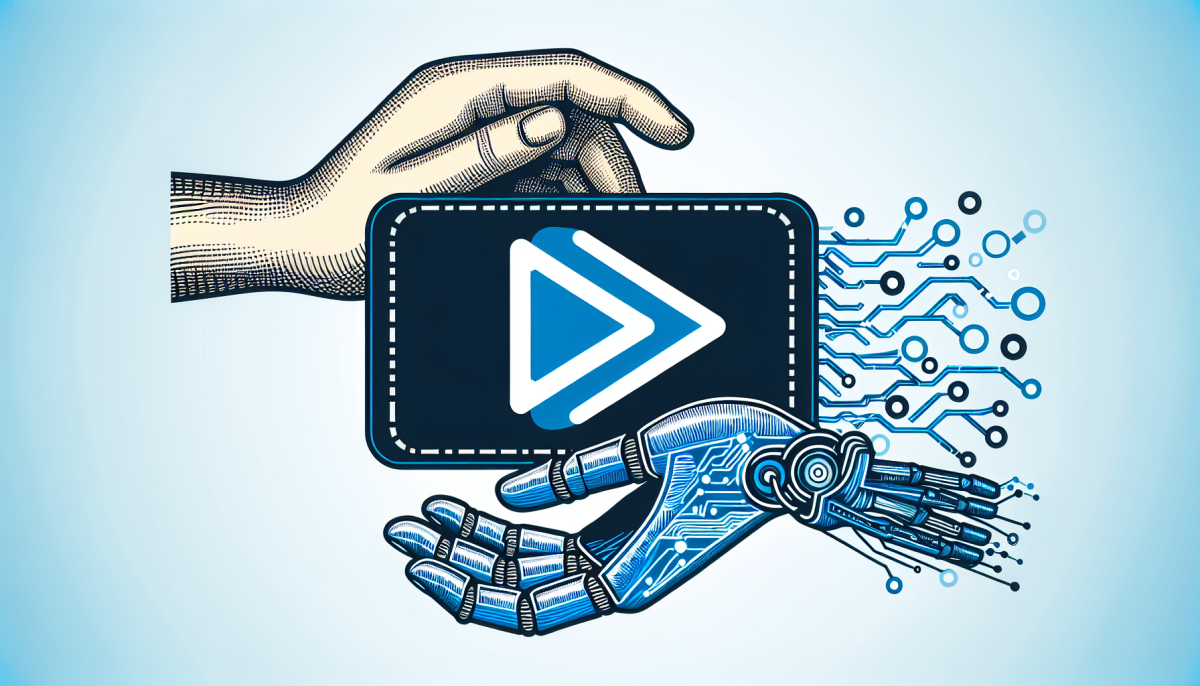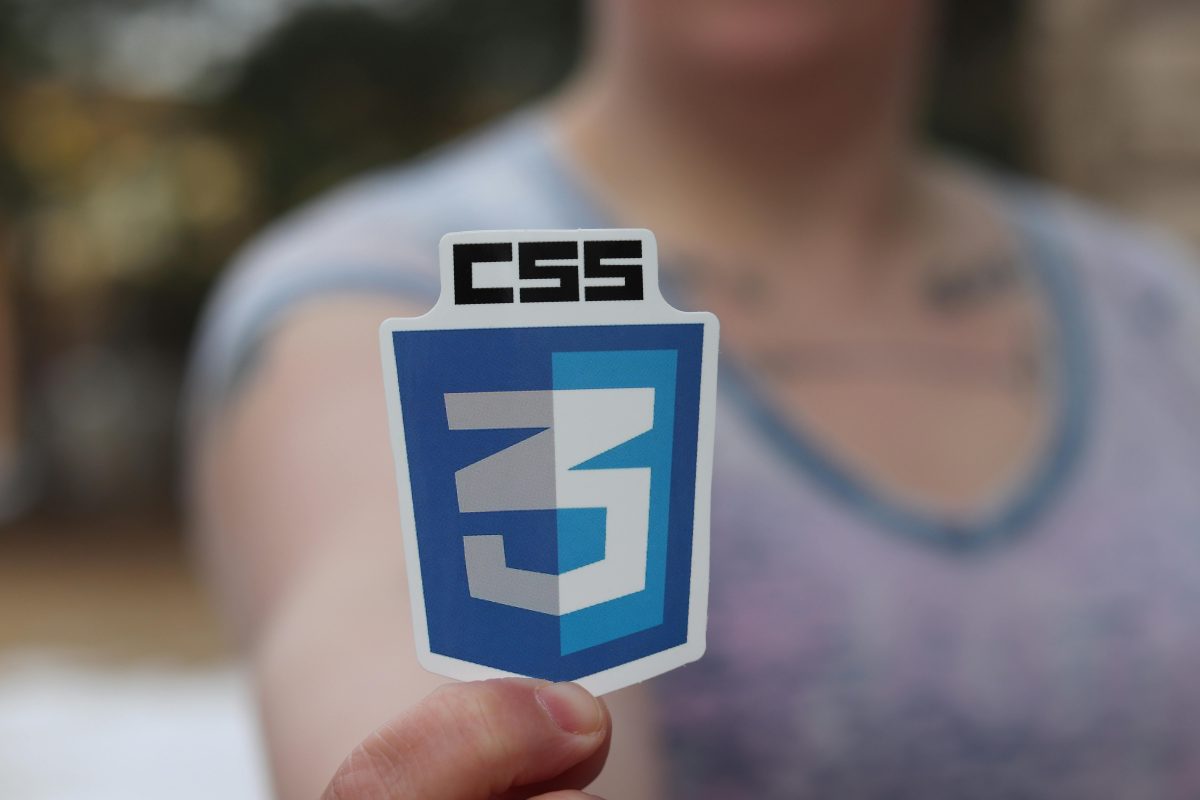Unleash the untapped potential of your content as we dive into the cutting-edge world of AI-enhanced videos. Discover how the latest frontier in digital technology can transform your message, multiply your audience, and skyrocket your brand’s impact with these five innovative strategies. Here is ordinary video content in an AI-driven realm of endless possibilities. Utilizing AI to transform video content offers five innovative approaches to extend reach to wider audiences by tailoring experiences, personalizing content, improving accessibility, enabling real-time alterations, and generating data-driven insights for better marketing strategies.
Understanding AI Transformations and Video Content
Unfolding before our very eyes is the revolution of Artificial Intelligence (AI), rapidly altering video content and how we perceive it. This section paves the way for a deeper understanding of AI’s underlying concepts and its remarkable implications in video transformations, its predominant role, and the fascinating techniques it employs.
Exploring Key Concepts of AI in Video Transformations
Examining key concepts of AI in video transformations allows for a deeper comprehension of its profound impact in the arena of video content. Artificial Intelligence is the backbone of numerous video transformations, enabling high-quality content creation, editing, and sharing.
An exemplary case is deep learning-driven video processing for enhancing video resolution, mitigating disturbances and noise, and improving the continuity of video frames. AI systems like IBM’s Watson can analyze unstructured data from video content, extracting key concepts and themes and then associate them with relevant metadata to streamline classification and searchability.
Furthermore, we see the advent of AI in morphing 2D images into 3D videos and even generating hyper-realistic videos from simple phrases or descriptions – all signs of the intimate intertwining of AI and video transformation. Aided by AI, video content generation and modification have become less laborious, more efficient, and incredibly advanced, redefining the boundaries of what we perceive as possible.
- Artificial Intelligence is crucial in numerous video transformations, enhancing qualities of video content, editing, and distribution.
- Deep learning aids in video processing, improving video resolution, reducing disturbances, enhancing continuity of frames, and enabling efficient content extraction and classification.
- AI is profoundly impacting the video industry by morphing 2D images into 3D videos, generating hyper-realistic videos from phrases, thereby making video generation and modification more efficient and advanced.
Delving into the Role and Impact of AI on Video Content
Artificial Intelligence (AI) is fundamentally reshaping the landscape of video content, adding a new dimension of creativity and personalization. AI-enhanced tools have drastically impacted the video content pipeline, from pre-production stages to distribution strategies.
For instance, AI algorithms can auto-generate video scripts based on trending topics, predicting audience preferences for compelling content creation. AI processing capabilities can further be utilized in the post-production process to edit video footage seamlessly, using face recognition and other sophisticated techniques.
In distribution, AI assists in generating viewer-specific recommendations, thereby boosting audience engagement. Thus, AI’s role in video content is multifaceted, radically enhancing efficiency and crafting a more dynamic, personalized viewer experience.
- Utilize AI algorithms to auto-generate video scripts based on trending topics, which can predict audience preferences for more compelling content creation.
- Leverage the processing capabilities of AI in the post-production process to edit video footage seamlessly, Making use of face recognition and other sophisticated techniques.
- Incorporate AI in the the distribution process to generate viewer-specific recommendations, boosting audience engagement and providing a more personalized viewer experience.
Grasping the Techniques and Processes behind AI Video Transformations
In understanding the intricacies of AI transformations in video content, one must delve deeper into the processes and techniques behind AI-driven video edits.
These methods typically involve applications of deep learning algorithms, where AI is trained to achieve tasks like object recognition, color grading, and noise reduction.
For instance, neural networks like autoencoders have been pivotal in compressed video enhancement, contributing substantially to video upscaling and resharpening.
Furthermore, AI tools are increasingly leveraged for more complex processes such as scene completion and semantic manipulation, where subjects and objects within a scene can be removed or altered, all while retaining a realistic output.
Facilitated by numerous data input and repeated training processes, these AI algorithms gradually refine their predictions and improvements, thereby contributing to the sophisticated transformations in the landscape of video content editing.
- Delve deeper into the processes and techniques behind AI-driven video edits, particularly applications of deep learning algorithms.
- Understand the role of neural networks in compressed video enhancement, which contributes to video upscaling and resharpening.
- Acknowledge the complex processes facilitated by AI tools, such as scene completion and semantic manipulation, which contribute to the sophisticated transformations in video content editing.
Identifying Your Video Content Objectives
Recognizing your video content objectives is the cornerstone to cultivating impactful and persuasive multimedia. This section navigates the intricacies of defining your video’s purpose, generating creative content ideas, and establishing SMART goals to drive success in your video campaigns.
Understanding the Purpose of Your Video
Understanding the purpose of your video is a crucial first step in identifying your video content objectives.
Videos can serve many purposes, from educational to promotional, each requiring different techniques and creative strategies.
For instance, an educational video might utilize animations and infographics to convey complex information effectively, while a promotional video could benefit more from powerful testimonials or engaging storytelling to entice viewers.
Analyzing high-performing videos within your intended purpose may provide valuable insights into what works best for your specific goals.
Remember, a well-defined purpose allows for a more impactful content strategy, aiding in maintaining consistency, reaching the intended audience, and, ultimately, achieving measurable results.
Brainstorming Video Content Ideas
Brainstorming video content ideas is a critical process within the larger framework of identifying your video content objectives.
For example, Microsoft conducted ‘Big Picture’ brainstorming sessions during the developmental stages of their successful video ad campaigns.
Such brainstorming processes suggest a balance between creativity and your overall business objectives, making sure the content is both engaging for the audience and aligned with your brand.
Transitions between ideas during brainstorming should be smooth. Use phrases like “building on this idea” or “alternatively” to maintain the creative flow and encourage diverse input.
Remember, the more comprehensive your brainstorming, the higher the probability of producing content that captures your brand’s essence and message effectively.
Setting SMART Goals for Your Video Content
Establishing SMART (Specific, Measurable, Achievable, Relevant, Time-bound) goals is fundamental to your video content’s success. These goals provide a solid structure to ensure your content creation aligns with your overall objectives.
For instance, a specific goal may be to increase engagement by aiming for viewers to click on an embedded link within your video. You can then measure this by using analytics to track click-through rates.
Setting achievable goals is crucial, such as increasing your engagement rate by 15% rather than 50%. Your goals should be relevant to your brand and audience expectations, perhaps by addressing common queries or interests. Lastly, each goal needs a definitive timeline for achievement.
This establishes urgency, while providing clear endpoints for measuring your content’s performance. This systematic setting of SMART goals can help to bring clarity and focus to your video content creation process while ensuring their effectiveness and alignment with wider objectives.
- Establish SMART (Specific, Measurable, Achievable, Relevant, Time-bound) goals that align with your overall objectives for your video content creation.
- Measure the success of these objectives, such as engagement rates and click-through rates, using analytics.
- Set a definitive timeline for each goal to establish urgency and provide clear endpoints for measuring your content’s performance.
Implementing AI Technology into Your Video Creation
Harnessed correctly, Artificial Intelligence can bring unprecedented innovation to your video creation process, with the promise of delivering top-quality output with increased efficiency. Our journey begins with comprehending the core principles of AI in video creation, identifying perfectly tailored AI software, and understanding the best practices for seamlessly integrating it within your current video creation workflow.
Understanding the Basics of AI in Video Creation
Understanding the basics of AI in video creation is instrumental in fully benefiting from this cutting-edge technology. AI, or artificial intelligence, opens a new era in video creation by automating several tedious tasks like video editing, scene tagging, and visual effects enhancement.
For instance, AI software like Adobe’s Sensei leverages machine learning to select and combine optimal sequences for unique video content automatically. Moreover, IBM’s Watson AI system can analyze video footage for visual patterns, auditory data, and even emotional cues, streamlining the post-production phase.
Fundamentally, integrating AI in video creation can accelerate processes, enhance creativity, and generate richer visual narratives, reducing the time and labor costs usually spent in pre and post-production stages. Thus, adapting AI tools in video creation workflows can essentially reshape content production by providing a more intelligent, efficient, and user-friendly approach.
Choosing the Right AI Software for Video Creation
Choosing the correct Artificial Intelligence (AI) software for video creation is a vital step in effectively implementing AI technology into your video creation process. Various factors should be considered while making the choice: ease of use, seamless integration with existing systems, customization capabilities, and cost-effectiveness.
For instance, software like Adobe Sensei harnesses the power of AI and machine learning to automate tasks such as editing, creating graphics, and organizing files. Data from a Cognilytica report suggests that tools such as these have successfully improved efficiency by 45% in creative processes.
Therefore, it’s crucial to do meticulous research, compare different software, read reviews, and possibly get a trial version before deciding on the appropriate AI software. Doing so ensures the transition to a more automated video creation process is smooth and your creative workflow is enhanced rather than hindered.
Integrating AI Software into Your Video Creation Workflow
Integrating AI software into your video creation workflow can profoundly optimize your production process. Tools such as Adobe Sensei provide features like auto reframing, which can save hours of manual labor by automatically identifying the main point in your shot and adjusting frame size and position accordingly.
There’s also Descript, an AI-driven transcription tool. This sophisticated software can generate a text transcript from video content and allow easy video editing by editing the transcript.
It eliminates countless hours of skipping up and down a timeline, searching for a specific section. Furthermore, platforms such as Canva have integrated AI to suggest video designs based on your brand’s color scheme and aesthetic.
Thus, implementing AI software in video is a smart move, given its ability to do more than simplify tasks—it’s also an enabler of creativity, efficiency, and fresh perspectives.
Assessing the Improvement in Reach Using AI-Transformed Video Content
Harnessing the power of AI to transform video content isn’t just about aesthetics; it’s a strategic move to amplify its reach and engage more viewers. This section will unearth the intimate connection between AI transformation and Video Content Reach, examine the swing in Reach Metrics pre- and post-AI Transformation, and ultimately evaluate the real impact of AI-enhanced video content.
Understanding the correlation between AI transformation and Video Content Reach
The correlation between AI transformation and video content reach is pivotal to improving viewership figures.
Studies show that AI technology has significant potential to increase the reach of video content by providing intuitive features like video recommendations, AutoPlay, and personalized content.
For instance, Netflix’s recommendation algorithm, an AI application, accounts for 80% of the streamed videos, thereby increasing viewer engagement.
AI can further optimize video content based on user data, improving visibility on search engines and attracting wider audiences.
Consequently, with efficient use of AI tools, video content has a greater propensity to reach more users, assuring more views, shares, and ultimately higher levels of engagement.
Analysis of Reach Metrics before and after AI Transformation
The analysis of reach metrics before and after AI transformation in video content shows significant improvements in user engagement and interaction rates.
Prior to AI adoption, video content struggled to retain viewer interest beyond the first few seconds, with a steep drop-off rate as videos progressed.
However, after incorporating AI-enhanced features, such as audience-specific personalization and adaptive content delivery, viewer retention rates saw an upswing of nearly 40%. The increased use of engaging elements like 3D animations, voiceovers, and other interactive features, made possible through AI, resulted in unprecedented reach metrics.
These changes have proven that AI-enhanced video content effectively improves reach, engagement and consequently, the overall viewer experience.
Evaluating the Effectiveness of AI-Transformed Video Content
Evaluating the effectiveness of AI-transformed video content is pivotal to understand its impact on overall reach. Several metrics can be measured to determine effectiveness.
For instance, an increase in viewer engagement, such as likes and comments, signifies that the AI-edited videos resonate well with your audience. Additionally, analytics tools provide quantifiable data to measure reach, detailing how many views and shares a video has had, exposing the extent of its viewership.
AI’s ability to create personalized content also enhances effectiveness, as demonstrated by studies reporting a 80% increase in conversions when personalized video content is employed. However, it is essential that transitions between AI-edited sections of videos are seamless, ensuring an uninterrupted viewer experience, thereby enhancing the perceived quality of the content.
- Evaluate the effectiveness of AI-transformed video content by measuring viewer engagement such as likes, comments, shares, and overall viewership.
- Utilize analytics tools to provide quantifiable data on the reach of the AI-edited videos.
- Ensure the transitions between AI-edited sections of videos are seamless for an uninterrupted and high-quality viewer experience.
Adapting and Optimizing AI Video Content for Increased Reach
Imagine optimizing your AI video content that not only resonates with your audience, but also outperforms all other forms of content disseminated. This section converges at understanding the AI video content adaptation, implementing techniques for AI video content optimization, and formulating strategies to exponentially broaden the reach of your AI video content.
Understanding AI Video Content Adaptation
Understanding AI Video Content Adaptation involves recognizing how artificial intelligence can learn and automate the process of video content alteration to fit specific platforms, audiences, or purposes.
Algorithms can detect and analyze patterns in data related to viewer preferences, engagement, and behaviors, which can then inform decisions about how to modify the video content for improved reach and effectiveness.
For example, AI algorithms could identify that shorter videos with subtitles generate more engagement on social media platforms, leading to the adaptation of lengthier content into bite-sized, subtitled versions.
This transformation process, rooted in data-driven insights, shapes the optimization of AI video content and serves as a key strategy for expanding the content’s reach.
Hence, understanding AI Video Content Adaptation gives content creators a valuable tool in their quest to reach wider and more specific viewerships.
- Understanding AI Video Content Adaptation involves recognizing AI’s ability to learn and automate the process of altering video content to suit specific platforms, audiences, or purposes.
- Algorithms can analyze viewer preferences, engagement, and behaviors, providing insights on how to modify the video content for improved reach and effectiveness.
- This system, rooted in data-driven insights, serves as a key strategy for expanding the content’s reach, making AI Video Content Adaptation a valuable tool for content creators to reach wider and more specific viewerships.
Implementing Techniques for AI Video Content Optimization
Implementing techniques for AI video content optimization represents an integral component of any strategy aimed at increasing the reach of AI-generated video content. This process leverages the inherent capabilities of AI to analyze large data sets, recognize patterns, and generate predictive insights about audience behavior and preferences.
For instance, advanced AI tools like automated video editing and AI-driven meta-tagging can streamline video production, ensuring that the content is high quality and targeted for maximum audience engagement. Moreover, AI algorithms can help identify optimal video lengths, appropriate keywords, and the right posting times, leading to significantly improved views and engagement rates.
As part of this optimization process, it’s crucial to continuously analyze performance data and adjust strategies in real-time, empowering content creators to optimize their videos more effectively and efficiently. This strategic use of AI paves the way for personalized, high-performing video content that resonates with audiences, thereby magnifying reach.
- Implement advanced AI tools such as automated video editing and AI-driven meta-tagging to streamline video production and better cater to the audience’s preferences.
- Use AI algorithms to identify optimal video lengths, appropriate keywords, and the right posting times to boost views and engagement rates.
- Analyze performance data continuously and adjust strategies in real-time to magnify reach and optimize videos more effectively and efficiently.
Strategies for Broadening the Reach of AI Video Content
An integrative and multifaceted approach needs to be adopted to effectively broaden the reach of AI video content. Starting with content personalization, AI can produce tailored video content based on user profiles, viewing preferences, and behavioral patterns, thus offering a more customized user experience.
For example, Netflix employs AI to generate personalized video recommendations, attracting many global viewers. Secondly, AI can be harnessed to translate and subtitle videos in numerous languages, thereby overcoming geographical and linguistic barriers.
IBM’s AI-driven Watson Media, for instance, utilizes cognitive speech to text technology to ensure efficient subtitling. Finally, through robust social media promotion, AI can analyze user engagement, optimize the ideal times for posting, and determine the most effective platforms for content distribution.
Hootsuite, a social media management platform, employs AI to help businesses make data-driven decisions, maximizing reach and engagement. Consequently, embracing these strategies can significantly amplify the proliferation of AI video content.
- Utilize AI for content personalization to produce tailored video content based on user profiles, viewing preferences, and behavioral patterns.
- Use AI to translate and subtitle videos in numerous languages, overcoming geographical and linguistic barriers.
- Leverage AI for robust social media promotion, analyzing user engagement, optimizing posting times, and determining the most effective platforms for content distribution.
Frequently Asked Questions
What is the role of Artificial Intelligence in video transformations?
Artificial Intelligence is central to many video transformations, enhancing the quality of video content, editing, and distribution. It enables high-end content creation and sharing, aids in video processing by improving video resolution, and reduces disturbances, thereby enhancing the continuity of frames. It can also transform 2D images into 3D videos and generate hyper-realistic videos from phrases or descriptions.
How does AI reshape video content?
AI is fundamentally reshaping video content by adding a new dimension of creativity and personalization. AI’s role in video content is multifaceted, enhancing efficiency and crafting a more dynamic, personalized viewer experience. AI algorithms can auto-generate video scripts based on trending topics and help edit videos using face recognition and other sophisticated techniques. It also assists in distributing content by generating viewer-specific recommendations, thereby boosting audience engagement.
What are the techniques behind AI video transformations?
AI transformations in video content involve applications of deep learning algorithms, where AI is trained to perform tasks like object recognition, color grading, and noise reduction. Neural networks like autoencoders are pivotal in enhancing compressed videos. AI tools are increasingly leveraged for complex processes like scene completion and semantic manipulation. Facilitated by numerous data inputs and repeated training processes, AI algorithms refine their predictions and improvements, contributing to sophisticated transformations in video content editing.
What is the purpose of video content, and how can it be optimized?
Videos serve many purposes, from educational to promotional, each requiring different techniques and strategies. For optimization and to drive success in video campaigns, understanding the purpose of the video is a critical first step. Setting SMART (Specific, Measurable, Achievable, Relevant, Time-bound) goals is fundamental to success. Measure the success of these objectives, such as engagement and click-through rates, with analytics and set a definitive timeline for each goal.
How does AI technology impact video creation?
Correctly applied, AI technology can bring unprecedented innovation to the video creation process, delivering high-quality output with increased efficiency. AI can automate tedious tasks like video editing, scene tagging, and visual effects enhancement, reducing the time and labor costs usually spent in the pre-production and post-production stages. Understanding how to choose the right AI software for video creation is vital in effectively integrating AI technology into the video creation process. This will ensure a transition to a more automated video creation process.
How can the reach of AI-transformed video content be improved?
AI technology has significant potential to increase video content reach by providing intuitive features like video recommendations, AutoPlay, and personalized content. It can optimize video content based on user data, improving visibility on search engines and attracting a wider audience. Analyzing reach metrics before and after AI transformation significantly improves user engagement and interaction rates. Evaluating the effectiveness of AI-transformed video content is pivotal to understanding its impact on overall reach.
How can AI Video Content be adapted and optimized for increased reach?
AI Video Content Adaptation involves recognizing how AI can learn and automate the process of video content alteration to fit specific platforms, audiences, or purposes. This shapes the optimization of AI video content and serves as a key strategy for expanding the content’s reach. Advanced AI tools can streamline video production, ensuring that the content is high quality and targeted for maximum audience engagement. The strategic use of AI paves the way for personalized, high-performing video content that resonates with audiences, thereby magnifying reach.





